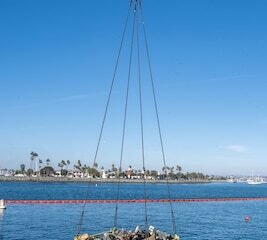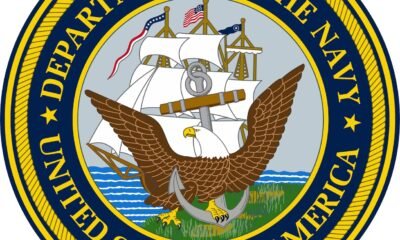All Navy Categories
NAVFAC Hawaii Unveils Fresh Data in Groundbreaking Turtle Tagging Initiative
JOINT BASE PEARL HARBOR-HICKAM, Hawaii — New data from a turtle tagging project led by Naval Facilities Engineering Systems Command (NAVFAC) Hawaii and NOAA Fisheries has shed new light on the behavior of threatened and endangered sea turtles. This initiative, part of a decade-long Interagency Agreement funded by the Navy, aims to support sea turtle recovery through comprehensive in-water surveys and telemetry tagging.
Between January 16 and February 14, Trevor Johannsen, marine natural resources specialist for NAVFAC Hawaii, collaborated with Dr. Alexander Gaos, a research marine biologist at the Pacific Islands Fisheries Science Center (PIFSC), to execute six days of turtle tagging surveys.
“Over six field trips, Alex Gaos’s team and I scouted the harbor, capturing turtles we spotted using snorkel gear,” Johannsen explained. “We tagged them with numbered metal tags on their flippers and added satellite tags to track their movement.”
Initial data revealed unexpected travel patterns. “Two turtles journeyed from Pearl Harbor to Molokai and Kaho’olawe and then traversed to Kauai, eventually reaching Niihau,” Johannsen noted. “Their far-reaching travels across the Hawaiian Islands exceeded our expectations.”
Further insights included the discovery that turtles often wedge themselves in “resting caves,” dislodging their satellite tags in the process. “This doesn’t affect our data significantly,” Johannsen assured. “We are waiting for all tags to cease responding before finalizing our report, expected about a year post-deployment.”
As of July 23, out of the original 23 tagged green sea turtles, eight satellite tags are still transmitting.
NOAA’s latest progress report highlighted another significant finding: the prevalence of the fibropapilloma virus (FP) in Pearl Harbor’s turtle population. This tumor-causing disease manifests as cauliflower-like growths on the turtles’ skin. Future studies are planned to measure the frequency of FP in the area.
Nicole Olmsted, another NAVFAC Hawaii natural resources specialist, emphasized the project’s broader implications. “This partnership facilitates the exchange of critical information and promotes a deeper understanding of our endangered species, guiding future management decisions,” Olmsted said. “The Navy remains dedicated to protecting natural resources at Pearl Harbor and other installations nationwide.”
Future analyses will focus on individual and collective turtle home ranges to better comprehend habitat use within Pearl Harbor. Ongoing captures and satellite tagging efforts will continue to provide valuable data on the biology and movement patterns of sea turtles in and around the Navy defense sea area of Oahu.











